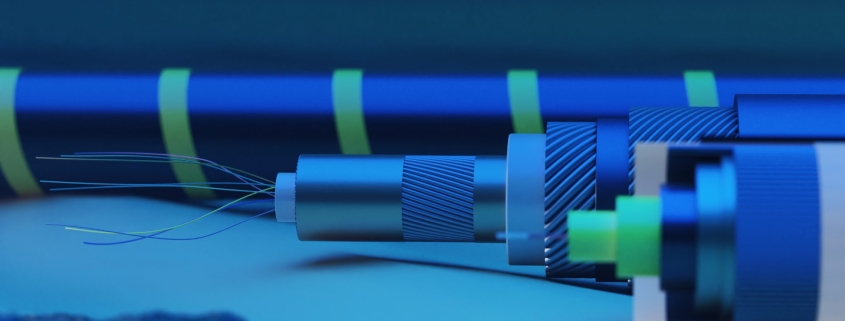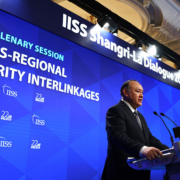Australia should work with South Korea to secure undersea cables
South Korea and Australia should enhance their cooperation to secure submarine cables, which carry more than 95 percent of global data traffic.
As tensions in the Indo-Pacific intensify, these vital connections face risks from cyber intrusions, sabotage and state-backed interference, particularly amid China’s growing maritime influence. South Korea boasts advanced technical expertise, while Australia has strong maritime capabilities and intelligence connections and is geographically well-placed. The two countries should combine these strengths to secure undersea infrastructure.
South Korea’s digital expertise is highly valuable. Integrating South Korea’s AI-based threat detection with Australia’s intelligence-sharing networks will enable both countries to identify and respond to cyber threats more effectively. The geographic advantages of Australia—and, to some extent, South Korea—can facilitate joint maritime patrols to protect cables, as well as diversification of infrastructure, including alternative cable routes and land-based backups.
Legal reforms and stricter cybersecurity regulations for telecom operators are necessary, alongside public-private partnerships in encryption and threat detection.
Submarine cables are a strategic asset that could be targeted in times of crisis. China’s maritime expansion and technological capabilities heighten concerns over potential data interception and infrastructure disruption.
South Korea’s advanced position in telecommunications technology and cybersecurity is a strength in digital infrastructure resilience. Australia is in a key position in the global cable network because of its geographical position.
Currently, there is no comprehensive global governance framework to secure submarine cables. The United Nations Convention on the Law of the Sea (UNCLOS) provides some legal protection but does not adequately address emerging threats such as cyberattacks and hybrid warfare tactics.
Additionally, jurisdictional complexities and private ownership of most submarine cables mean there are gaps in coordinated response mechanisms. Furthermore, many regional states, including South Korea and Australia, have historically prioritised military security over digital infrastructure resilience, leading to insufficient attention to undersea vulnerabilities.
Existing security and economic partnerships could fill these framework gaps, facilitating intelligence-sharing, cyber defence initiatives and coordinated threat assessments. This would help facilitate preventative threat management, rather than relying on reactive measures.
Bilaterally, a South Korea-Australia cybersecurity pact could further enhance coordination on emerging threats. A comprehensive pact would include provisions for physical elements of cyber infrastructure, such as subsea cables. Collaborative projects, such as the development of regionally secured data hubs, could protect sensitive information flows from geopolitical disruptions.
Joint surveillance efforts through AI-based monitoring systems and satellite tracking could strengthen real-time detection of disruptions. Both countries’ navies should also expand maritime patrols along key submarine cable routes to deter adversarial interference. A regional submarine cable security task force could also be established to ensure ongoing coordination and rapid response to emerging threats.
South Korea and Australia must work together to build resilience through infrastructure diversification. They could, for example, support alternative cable routes, reducing dependency on single points of failure or a monopoly of control. Investment in land-based backup systems and secure satellite communication should also be prioritised. Governments should provide financial incentives to private sector companies investing in resilient cable infrastructure and establish joint research initiatives to develop advanced protective measures against cyber threats and physical disruptions.
Legal and policy advancements should accompany these efforts. South Korea and Australia must push for amendments to UNCLOS that address modern cyber threats and advocate for international agreements that criminalise malicious activities targeting undersea infrastructure. A bilateral treaty specifically focused on the protection of submarine cables in the region could establish clear rules and mutual obligations, setting a regional example.
At the national level, stricter regulations on private telecommunications operators, including mandatory cybersecurity protocols and compliance standards, would further enhance resilience. Both governments should also establish mandatory reporting mechanisms for cable operators to immediately share information on potential threats.
Public-private partnerships will be essential in this effort. Governments, technology firms and telecommunications providers should collaborate on encrypted data transmission protocols and conduct regular cybersecurity simulations to prepare for potential attacks. Joint research and development efforts in cable security technologies, including quantum encryption and automated anomaly detection, could position South Korea and Australia as global leaders in digital infrastructure protection.
Establishing a joint Indo-Pacific digital security forum would further institutionalise collaboration and knowledge-sharing on best practices. Increased investment in training programs for cyber resilience experts could also ensure that both countries maintain highly skilled personnel to respond to future challenges.
Securing submarine cables is not just a strategic choice but a necessity for economic stability and regional security. South Korea and Australia should create a long-term roadmap for continued investment in submarine cable security, ensuring sustained cooperation and adaptation to evolving threats.



